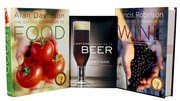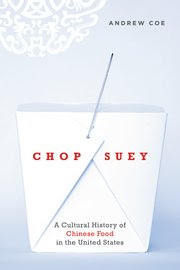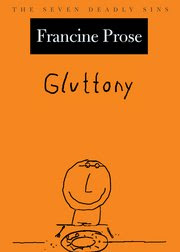KYOTO, JAPAN — In a university laboratory in Kyoto, a city known for producing the most exquisite food in a country known for its exquisite food, a group of renowned chefs in white coats have been conducting experiments with one question in mind: Can science make their perfect dishes even more perfect?
Forget the “molecular gastronomy” that has become all the rage in Western capitals. Forget Ferran Adrià, the “deconstructivist” Spanish chef, with his “culinary foam” and spherical olives. And forget José Andrés with his liquid nitrogen strawberries.
Here, a group of nine chefs and three scientists is pushing the boundaries in the most minimalist, nuanced way, part of an effort to ensure that this ultimate “slow food” remains relevant in a fast-paced world. The chefs are tinkering with a way of cooking that has remained unchanged for centuries.
First, in the dedicated Japanese Cuisine Laboratory at Kyoto University’s school of agriculture, the chefs played around with the temperature at which they steamed abalone. Received wisdom says it should be steamed at 212 degrees Fahrenheit, or the boiling point of water, for two hours.
“But we wondered, ‘How about we try lower temperatures?’ ” said Tohru Fushiki, professor of nutrition chemistry at Kyoto University and a leading researcher on oishisa, or tastiness. He is one of the chief proponents of washoku, the traditional Japanese cuisine that was recognized by UNESCO as an
intangible cultural treasure last December.
So the chefs spent six months — yes, six months — steaming abalone, changing the temperature in tiny increments. “It turned out that even two degrees had a huge impact on its deliciousness,” Fushiki said in his university office. The perfect temperature to steam an abalone, they concluded, is between 140 and 148 degrees, depending on how it is used.
 Chef Motokazu Nakamura prepares for lunch in the kitchen. (Noriko Hayashi/For The Washington Post)
Chef Motokazu Nakamura prepares for lunch in the kitchen. (Noriko Hayashi/For The Washington Post)
The second six-month period was devoted to coagulation. Not content with coagulating food, they experimented with coagulating air.
“How can we make the smell of air?” Fushiki recalled the chefs asking. “Let’s whisk and make bubbles, so that each bubble contains the air, and the smell spreads when the bubbles pop.”
Another experiment involved seeing how long shiokara, or pickled squid guts, could last. (Discovering the true expiration date was apparently not a pleasant experience.)
Now, the chefs are focusing on the time it takes for your tongue to fully register the flavor of a food. Salt and sugar hit the palate straight away, Fushiki said, but it takes five or six seconds for each flavor in red pepper to be captured by your taste buds.
But the chefs decided they wanted to delay the amount of time it took to experience the full flavor of a mouthful. “We thought, ‘Why don’t we come up with a dish that lets you taste different flavors one after the other over a period of seconds?’ ” he said.
These changes count as revolutionary here, in the old imperial capital of Japan, renowned as the bastion of Japanese culture.
Washoku is a key part of that culture. A basic washoku meal consists of a bowl of soup, rice and three dishes. Washoku chefs think a lot about “umami,” a fifth primary taste usually translated as “savory.”
 Outdoor zen gardens line Nakamura, a restaurant with three Michelin stars. (Noriko Hayashi/For The Washington Post)
Outdoor zen gardens line Nakamura, a restaurant with three Michelin stars. (Noriko Hayashi/For The Washington Post)
Culinary secrets are passed down through the generations. There are no recipe books. There is not even verbal instruction. Chefs of Japanese haute cuisine have traditionally learned the “mite nusumu” way — by looking and copying (literally: stealing) what their superiors are doing.
In his kitchen on a recent day, Motokazu Nakamura was preparing lunch courses that looked like they’d been made by Leonardo da Vinci.
The main pillars of the menu, regardless of the season, are white miso with Western-style mustard — which gives the soup a rich, pungent yet somehow delicate flavor — and tile fish, which has been used by generations of Nakamuras. The current chef often just brushes it with sake and grills it.
“We take an analog approach,” he said, looking more like a science professor than a chef, with his tie and white coat.
But he is branching out, participating in Fushiki’s lab. “Chefs cook and provide something for people to enjoy,” the 52-year-old chef said. “For that, we need to use our imagination. That would have been unheard of for our ancestors.”
The restaurant, which has three Michelin stars, preserves all the traditions expected by people who spend $230 each on dinner. It is housed in an old wooden Kyoto building, a series of private rooms with tatami mats, connected by hallways that run between outdoor zen gardens where water trickles with just the right amount of tinkle. The rooms smell of scented burning wood.
But Nakamura is beginning to tweak the recipes by studying the science behind them. “I knew how to cook it, but it was coming from my instinct. I didn’t know the science behind it,” he said as he arranged slivers of raw fish on a plate.
While the chefs were preparing lunch, Bunji Nakamura sat at a small table in a corner of the kitchen, long eyebrows creeping over his glasses as he watched his son intently.
“I already handed the leadership of the restaurant over to my son, so I don’t make any objections to what he wants to try,” the fifth Nakamura chef said, a simple lunch of rice and fish soup in front of him.
Nakamura is the sixth-generation chef at his family’s 190-year-old
eponymous restaurant, an “isshi soden” where a chef’s secrets can be passed down only to one son and heir.
“If you have too many sailors, your boat goes up a mountain,” he added, using the Japanese version of “too many cooks spoil the broth.”
Still, he admits to being a little perplexed by the newfangled technology in front of him, like the electric grill.
“What’s important is that the food reflects your heart,” the elder Nakamura said. “Even if you measure the ingredients to the exact gram, your food won’t be good if you don’t have a mission to have people enjoy your food.”
The way Japanese chefs are using science to hone their craft is “totally fascinating,” said Greg de St. Maurice, a University of Pittsburgh PhD student who is writing his doctorate on the food of Kyoto.
“They’re using science very differently from the way it’s being used in the U.S. It’s something that is very new to Japanese cuisine,” he said. “Now chefs are realizing, especially in the old restaurants, that their methods are not well suited to contemporary cooking.”
It’s not clear yet whether their experiments in the lab have changed the food these chefs are serving in their restaurants. These things take time here (give it a few decades).
“But what has changed is their mind-set. They come to the lab so that they can play and experiment with food, and learn new things that they can apply in their restaurants,” St. Maurice said.
Still, Motokazu Nakamura agrees with his father that heart remains the most important factor: “The basic foundation of cooking is that I make this and people enjoy it."
Yuki Oda contributed to this report.

Anna Fifield is The Post’s bureau chief in Tokyo, focusing on Japan and the Koreas. She previously reported for the Financial Times from Washington DC, Seoul, Sydney, London and from across the Middle East.
 麥克·理查斯 (Mike Richards) 是名營養方面的考古學家兼卑詩大學 (University of B.C.) 畢業調查與研究的副院長,並與最近加入了加拿大皇家學會 (Royal Society of Canada)。為了了解查理斯是否擁有穴居人飲食的相關證據以及人們過去的飲食,《溫哥華太陽報》對理查斯做了如下採訪。
麥克·理查斯 (Mike Richards) 是名營養方面的考古學家兼卑詩大學 (University of B.C.) 畢業調查與研究的副院長,並與最近加入了加拿大皇家學會 (Royal Society of Canada)。為了了解查理斯是否擁有穴居人飲食的相關證據以及人們過去的飲食,《溫哥華太陽報》對理查斯做了如下採訪。

































